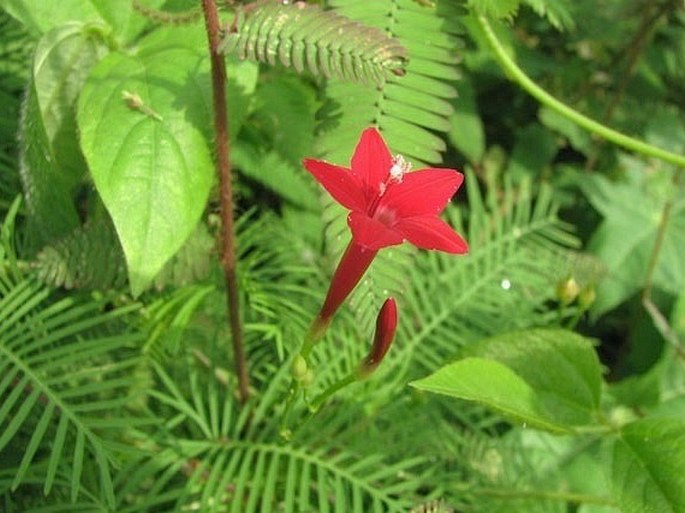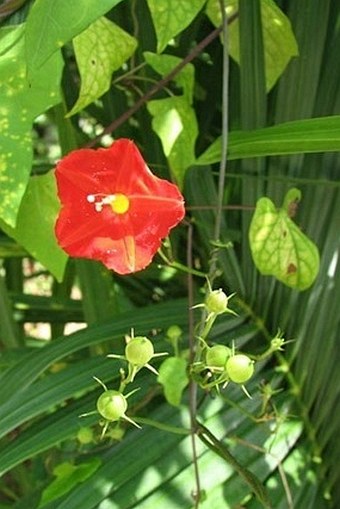Syn.: Convolvulus pennatifolius Salisb., Convolvulus pinnatus Desr., Convolvulus quamoclit (L.) Spreng., Ipomoea cyamoclita St.-Lag., Quamoclit pinnata (Desr.) Bojer, Quamoclit quamoclit (L.) Britton, Quamoclit vulgaris Choisy
Family: Convolvulaceae Juss.

Distribution: Native to central America, probably Mexico, presently spreading all over the world in tropical and subtropical regions.
Ecology: It is widely distributed in a number of habitats ranging from the margins of mangroves to rainforest margins, also covered grass swards, from the coast to elevations of 1500 m. Blooms from June to January.
Description: Annual vine, stems 2–3 m long, with good support up to 6 m high. Leaves 5–10 cm long, compound, pinnately divided into 9–19 segments, linear, with fern-like appearance. Flowers solitary or in 2–5 flowered cymes; pentamerous, sepals elliptic to oblong, 4–7 mm long; corolla tubular, scarlet red, 2–3 cm long, about 2 cm across, stamens and pistil, white, exserted. Fruit is a capsule, ovoid, 6–8 mm long; seeds dark brown to black.
Note: Flowers are attractive to hummingbirds and butterflies.



These images were taken in Mexico, Jalisco, Puerto Vallarta (October 2008).


